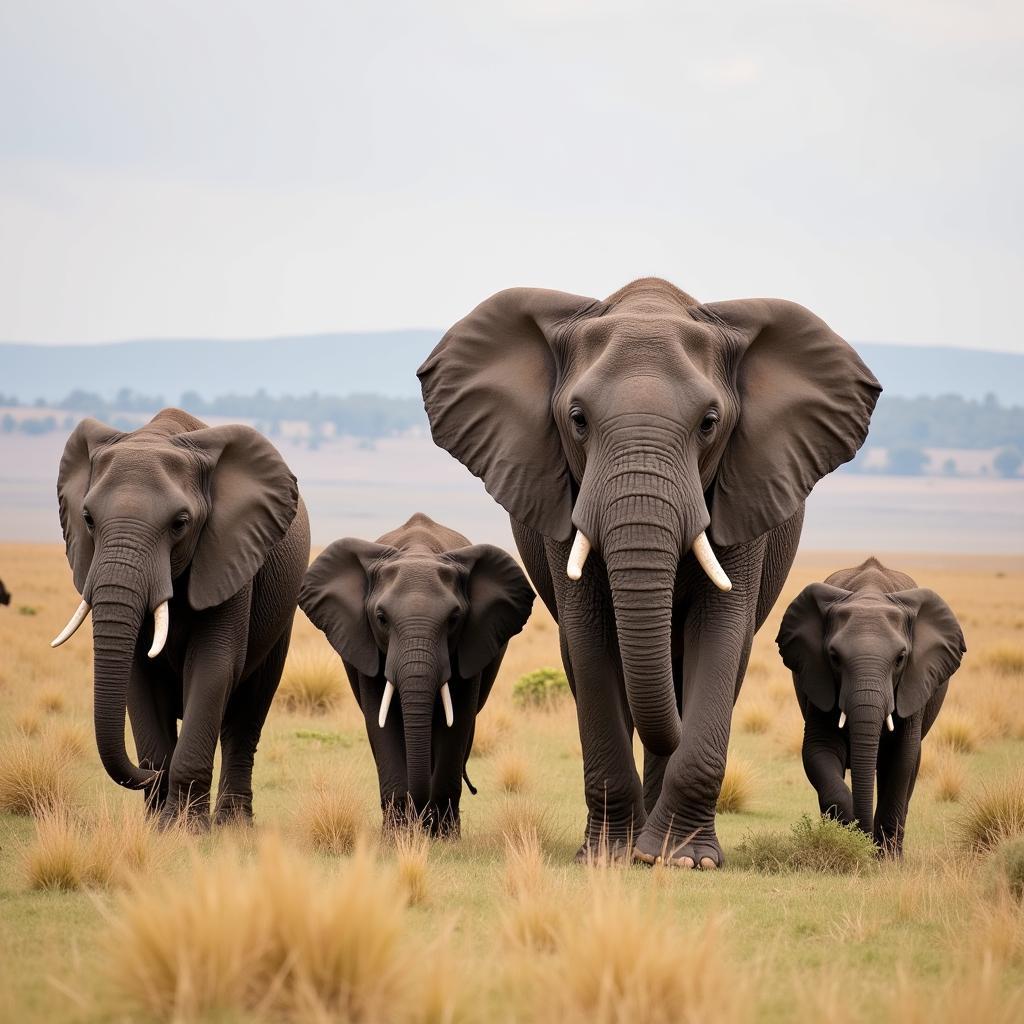Unveiling the Complexities of African Elephant Behaviour
African elephants, the largest land mammals on Earth, captivate us with their sheer size and grandeur. But beyond their imposing presence lies a world of intricate social interactions, surprising intelligence, and fascinating behaviours. Understanding these behaviours is key to appreciating these gentle giants and ensuring their survival.
A Matriarchal Society: The Heart of African Elephant Behaviour
At the core of African Elephant Behaviour is their complex social structure, centered around family units led by a matriarch – the oldest and most experienced female. This wise leader guides her herd, often composed of her daughters, sisters, and their calves, making crucial decisions about foraging, migration routes, and potential threats. The matriarch’s knowledge, accumulated over decades, is crucial for the survival of the entire family group.
Communication is Key: The Language of Rumbles and Gestures
While their loud trumpets signal alarm or excitement, African elephants predominantly communicate through a series of low-frequency rumbles, many inaudible to the human ear. These rumbles travel for miles, allowing elephants to stay connected across vast distances. Visual cues, like ear flapping, trunk movements, and head shakes, also play a significant role in their communication repertoire.
Intelligence on Display: Problem-Solving and Empathy
African elephant behaviour consistently reveals their impressive intelligence. They demonstrate problem-solving skills, using tools like sticks to access food and water, and they possess remarkable memories, remembering individuals and locations after years of separation. Perhaps most touching is their capacity for empathy. Elephants console grieving herd members, mourn their dead, and even show compassion for other species in distress.
The Importance of Play: Not Just for Calves
Play is not just for youngsters in the elephant world. While calves engage in boisterous play that helps them develop social skills and coordination, adults also partake in play, strengthening bonds and relieving stress. Mud bathing, another common behaviour, serves both social and practical purposes, protecting their skin from the sun and insects.
Understanding African Elephant Behaviour: A Shared Responsibility
Learning about African elephant behaviour is not merely an academic pursuit; it’s a responsibility. As we understand their complex lives, we are better equipped to protect them from threats like poaching and habitat loss. Supporting conservation efforts, advocating for their well-being, and promoting responsible tourism are all crucial steps in ensuring these magnificent creatures continue to roam free for generations to come.


